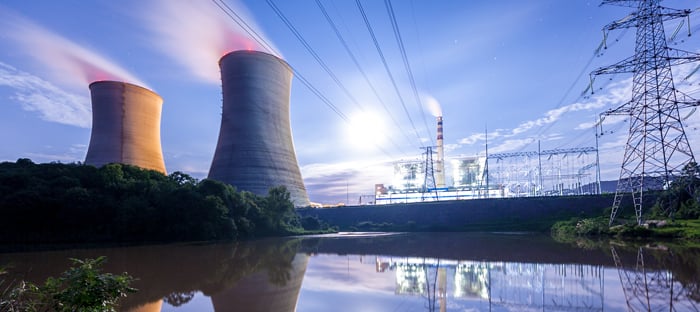Power your home
Enjoy price security with Safe Harbor fixed price energy plans

Power your business

Loading component...
Loading component...
Energy Resources

The demand for carbon offsets grows larger and louder every day, and part of this exponential growth is the result of mega- corporations – Microsoft, Nike – investing in offsets to meet their sustainability and net zero goals. Smaller organizations and individuals are also finding reason to invest in offsets. This investment demand has led to the rise of carbon markets to aid in smoothing the transition to net zero.
A $1 billion market in 2021, BloombergNEF analysts believe the trade of carbon offsets could become a $190 billion market by 2030, according to Bloomberg Market Analysis. Such significant investment has buoyed burgeoning voluntary markets and compliance carbon markets, creating opportunity for brokers, investors, auditors, and others in what has become a viable asset class.
“It suggests that institutional investors could play a critical role in helping corporations and nations use these markets to achieve global climate goals while also fulfilling institutional investors’ own mandates,” McKinsey writes in its report. Putting carbon markets to work on the path to net zero.
Marketplaces where companies and individuals both purchase and trade carbon offsets on a voluntary basis or pursue projects targeted at removing carbon from the atmosphere. Examples include nuclear generation, renewable energy, reforestation, and emission capture projects. This marketplace includes all carbon offset transactions purchased with the sole intention to meet carbon neutral rather than for compliances purposes. Voluntary Carbon Markets (VCMs):
Marketplaces where national, regional, or even international entities set carbon dioxide reduction targets and regulate the trade of carbon credits, or in other words an emissions allowance awarded to a company. Each credit is equal to one ton of CO2 emissions a company is allowed to generate.
Probably the greatest concern surrounds the true value of purchasing carbon offsets and if there is a true balance between the volume of carbon emitted into the atmosphere and carbon captured or reduced by offsets. The answer is a somewhat sobering one.
It is true that in the market’s early days, many organizations purchased offsets for projects that were never completed, didn’t produce the desired effect or were fraudulent to begin with.
In one of the most famous examples, in the late 2000s, Russ George, a San Francisco entrepreneur, presented a carbon offset plan to would-be investors, including the Vatican. Through his company, Climate Trees, George told investors he would plant an expansive forest in Hungary’s Bukk National Park. The project would not only absorb tons of carbon from the atmosphere, it would create jobs for the down-on-its-luck Hungarian town of Miskolc. Investors and The Vatican bought in.
When the business went bankrupt and not a single tree was planted, the “false hope” of unverified carbon offsets put investors and brokers on notice. And while almost all of those incidents have been mitigated by a more sophisticated and mature offset market, the experience lingers.
For brokers, investors, and climate experts, the challenge comes down to permanency. A quality offset should result in a permanent reduction of carbon in the atmosphere.
Some organizations have invested in projects that would have occurred regardless of offset funding. Carbon offsets are meant to be in addition to the normal course of business. Offset investments must be the catalyst for a project that wouldn’t happen otherwise. In other words, the funding from the offset credit sale should be the only reason – and the only way – the offset project comes to fruition.
This is important because additionality causes over-accreditation to occur. In a way, over-accrediting is like double dipping. A carbon offset sold against a project that did not need the funding means that it represents nothing. The original funding, whatever that may be, gets credit for the reduction – and nothing more.
These risks grow smaller every day, but they continue to vex investors who know that there are plenty of legitimate offset projects that do the work of reducing greenhouse gas (GHG) emissions in our atmosphere.
Investors are relying more heavily on carbon offset brokers, now considered expert navigators of this new industry, to guide decisions, protect investments, and assure they are meeting their net zero goals. In most cases, brokers help facilitate the carbon offset transaction between investor and project in exchange for a commission.
Just like their investors, brokers are equally concerned about the viability of certain offset projects within the voluntary market and compliance carbon markets. Offset projects that fail, like a forest destroyed by wildfire, negates the value of the offset, both in its value to the market and to the larger goal of worldwide carbon emission reduction.
Currently, nuclear energy is the most reliable source of clean energy, yet even still it presents challenges to brokers. Organizations that invest in carbon offsets produced by nuclear energy generators - typically known as Emissions-Free Energy Certificates (EFECs) - are demanding granular carbon accounting, often down to the hour – and in some cases down to the minute – to ensure a verified balance of emission free energy matching consumption. So, beyond facilitation of emissions trading and purchasing carbon offsets, the work of brokers, then, becomes vetting carbon offsets for their clients to ensure investment risk is minimal.
So how do they do that?
Brokers turn to authenticated third-party certification programs, such as Verified Carbon Standard or Verra, Gold Standard, The American Carbon Registry, Climate Action Reserve, and Green-e Climate Standard, to help confirm the viability of offsetting programs.
They do this by tasking auditors, or validation/verification bodies (VVBs), to assess carbon offset projects to ensure they meet the standards and methodologies set forth by the certification organization. VVBs are accredited and work independently from the certification programs that hire them.
While methodologies vary, they all seek to quantify the real GHG benefits of an offset project. They also help project leaders and developers refine their project to best reach its goals as well as providing financial and marketing advice to growing projects.
As the market grows, brokers may get the benefit of stricter regulatory rule over carbon offset programs. In June 2022, the Commodity Futures Trading Commission (CFTC) convened a panel of experts to discuss voluntary and compliance carbon offset markets and a possible role for the CFTC in them.
For brokers working with nuclear energy generators, the challenge is assuring EFECs are verifiably tracked. Energy Harbor, which offers businesses and organizations affordable and easy to purchase EFEC carbon offsets, leverages FlexiDAO’s web- based REspring tracking and analytics tool to certify that every megawatt hour is matched on a 24/7 basis by emission free energy produced by its nuclear generation plants. Additionally, Energy Harbor’s EFECs are auditable through PJM’s Generation Attribute Tracking System (GATS).
EFECs are often more affordable on the offset market than other options like RECs in part because of the high cost of infrastructure creation and maintenance tied to renewables and conservation programs. Nuclear power infrastructure already exists, and maintenance is often less expensive, allowing generators like Energy Harbor the ability to offer EFECs at low cost.
Nuclear is also the most reliable source of clean energy, both in terms of capacity factor and because it is the only carbon- free energy generator that operates 24 hours a day, 7 days a week, 365 days a year. While renewable energy, sold as Renewable Energy Credits (RECs), is another viable source of clean energy, it isn’t as reliable as it can be hampered by inclement weather and fluctuations in solar and wind accessibility; and backup power for these resources is often provided by nuclear generation. The carbon reduction impact from EFECs is also immediate, unlike forestry and carbon capture technology, which is still in its infancy.
EFECs offset energy for new or existing supply contracts, for both power and natural gas. Even if your business’s power supply is with another supplier, Energy Harbor can provide you with EFECs to offset your hourly usage on top of an existing agreement.
If you’re ready to add carbon offsets to your net zero strategy, contact Energy Harbor or fill out our business solutions contact form.
Contact Energy Harbor to get started.